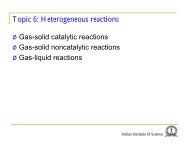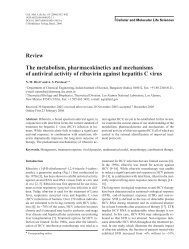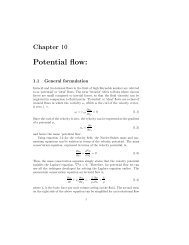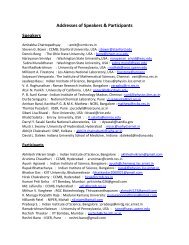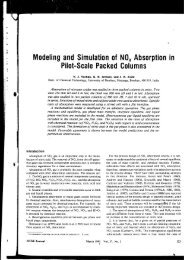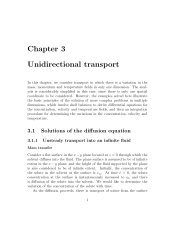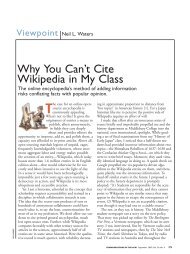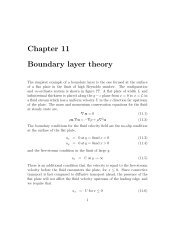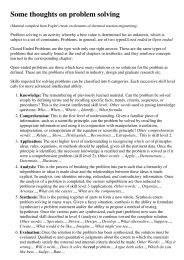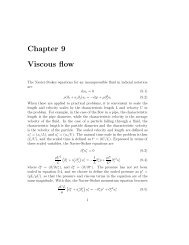Chapter 5 Steady and unsteady diffusion
Chapter 5 Steady and unsteady diffusion
Chapter 5 Steady and unsteady diffusion
Create successful ePaper yourself
Turn your PDF publications into a flip-book with our unique Google optimized e-Paper software.
22 CHAPTER 5. STEADY AND UNSTEADY DIFFUSION<br />
5.3 Problems<br />
1. Derive the harmonic expansion for a two dimensional cylindrical coordinate<br />
system with coordinates (r, θ).<br />
(a) Use separtion of variables to solve the equation K∇ 2 T = 0 in<br />
cylindrical co-ordinates.<br />
(b) For a point source, solve the heat equation K∇ 2 T = Qδ(x) in<br />
cylindrical coordinates, to obtain the temperature distribution due<br />
to a point source.<br />
(c) What is the temperature field when two sources are located as<br />
shown in figure 1(a) <strong>and</strong> 1(b), <strong>and</strong> L ≪ r Compare with the<br />
second terms in the cylindrical harmonic expansion.<br />
(d) What is the temperature field when four sources are located as<br />
shown in figures 1(c), <strong>and</strong> (d) Compare with the third terms in<br />
the cylindrical harmonic expansion.<br />
(e) Determine the second <strong>and</strong> third terms in the harmonic expansion<br />
by successively taking gradients of the temperature field due to<br />
the point source.<br />
2. Determine the effective thermal conductivity for a dilute array of infinitely<br />
long circular cylinders along the plane perpendicular to the axis<br />
of the cylinders, when the area fraction of the cylinders is φ. Use the<br />
following steps.<br />
(a) Consider an infinitely long cylinder with conductivity K p in a<br />
matrix of conductivity K m , <strong>and</strong> determine the temperature field<br />
around the cylinder when a uniform gradient T ′ is imposed in the<br />
x direction perpendicular to the axis of the cylinder.<br />
(b) Write the heat flux as the sum of the flux over the matrix <strong>and</strong><br />
the sum over the cylinders. When the array is dilute, write the<br />
integral as the sum over one cylinder, <strong>and</strong> determine the thermal<br />
conductivity.<br />
(c) What is the effective conductivity along the axis of the cylinders<br />
3. A point source of heat of strength Q (in units of heat energy per unit<br />
time) is placed at a distance L from a wall.



